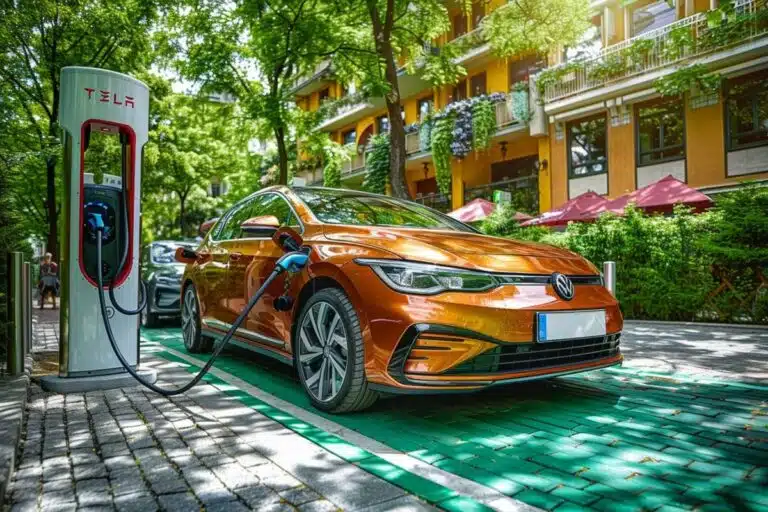The circular economy and its relationship with energy savings
The circular economy presents itself as an innovative model that transforms the way energy resources are understood and managed. Unlike the traditional linear model, which promotes production and waste, the circular economy seeks to maximize the value of resources throughout their life cycle, fostering energy savings and sustainability. This renewed approach not only minimizes waste generation but also promotes practices that allow for more efficient energy use, thus contributing to a greener and more responsible future.
The circular economy is presented as a transformative paradigm that redefines the traditional approach to production and consumption, encouraging practices that not only promote sustainability but also significantly contribute to energy savings. Through resource optimization, waste reduction, and the implementation of innovative technologies, this model facilitates more efficient energy use, generating a positive impact on the environment and the economy.
The concept of circular economy
The circular economy is based on the idea of keeping products, materials, and resources in use for as long as possible. This philosophy seeks to minimize waste and promote the reuse, recycling, and regeneration of materials. Unlike the traditional linear economy, which follows the “produce, use, dispose” cycle, the circular economy proposes a model in which the flow of materials is continuously optimized.
Practices that promote energy savings
One of the most notable applications of the circular economy is recycling. For example, recycling paper not only reduces energy consumption but also decreases water usage. Each ton of recycled paper saves up to 17 trees and allows for a considerable reduction in energy and water used in its production. This virtuous cycle ensures efficient management of natural resources, contributing to sustainability.
Impact on the energy sector
The shift towards a circular economy has proven to have a significant impact on the energy sector. Thanks to the integration of technical and technological solutions, new job opportunities have been generated and improvements in production processes have been made. Renewable energy sources, combined with circular practices, provide a more sustainable approach that helps reduce dependence on fossil fuels and decrease carbon emissions.
Economic benefits and sustainability
The implementation of the circular economy translates into economic benefits, including reduced operating costs and increased competitiveness. By optimizing resource use and adopting responsible consumption habits, companies can confront climate challenges and contribute to sustainability goals. This approach not only helps mitigate climate change but also fosters a more resilient and conscious economy.
A look towards the future
With initiatives and policies supporting the circular economy, the door is opened to a future where efficient energy use and sustainability become standard practices. Programs like the European Green Deal reinforce this commitment, promoting the integration of more sustainable energy systems.
Innovative initiatives in sustainable mobility
In the transportation sector, brands like Jaguar and Land Rover are leading the way in adopting green technologies. Innovation in electric vehicles and their production from recycled materials are clear examples of how the circular economy can transform the sector, contributing to energy savings and a more sustainable future.
Conclusion
By understanding and applying the principles of the circular economy, multiple paths to optimize energy savings and move towards a more sustainable economic model are discovered. The key lies in rethinking resource use, promoting practices that are not only efficient but also ensure a balance between economic development and environmental protection.
Currently, the circular economy is established as a fundamental model to tackle the energy and environmental challenges of the modern world. This approach promotes a more responsible and efficient use of resources, which in turn translates into significant energy savings. By breaking away from the traditional linear cycle of production and consumption, the circular economy allows for a rethinking of how energy resources are generated and utilized, transforming waste into new opportunities.
One of the pillars of the circular economy is recycling. By recycling materials such as paper, energy can not only be conserved but also the use of other essential resources, such as water, can be reduced. The production of recycled paper can save up to 17 trees for every ton, in addition to reducing energy consumption by 50%. These practices reflect the need to adopt more sustainable and responsible consumption habits, thus promoting a culture of energy savings.
The implementation of advanced technologies in the energy sector also plays a crucial role in this paradigm. The circular economy fosters innovation in the development of energy solutions that optimize the use of renewable energies and maximize efficiency. As companies and governments adopt circular practices, new opportunities are being opened to reduce dependence on fossil fuels and move towards a more sustainable energy system.
In this context, the circular economy not only represents a change in production and consumption methods but also stands as an essential strategy in the fight against climate change. This comprehensive approach benefits both society and the environment, and its adoption is a key step towards a more sustainable, waste-free future.



